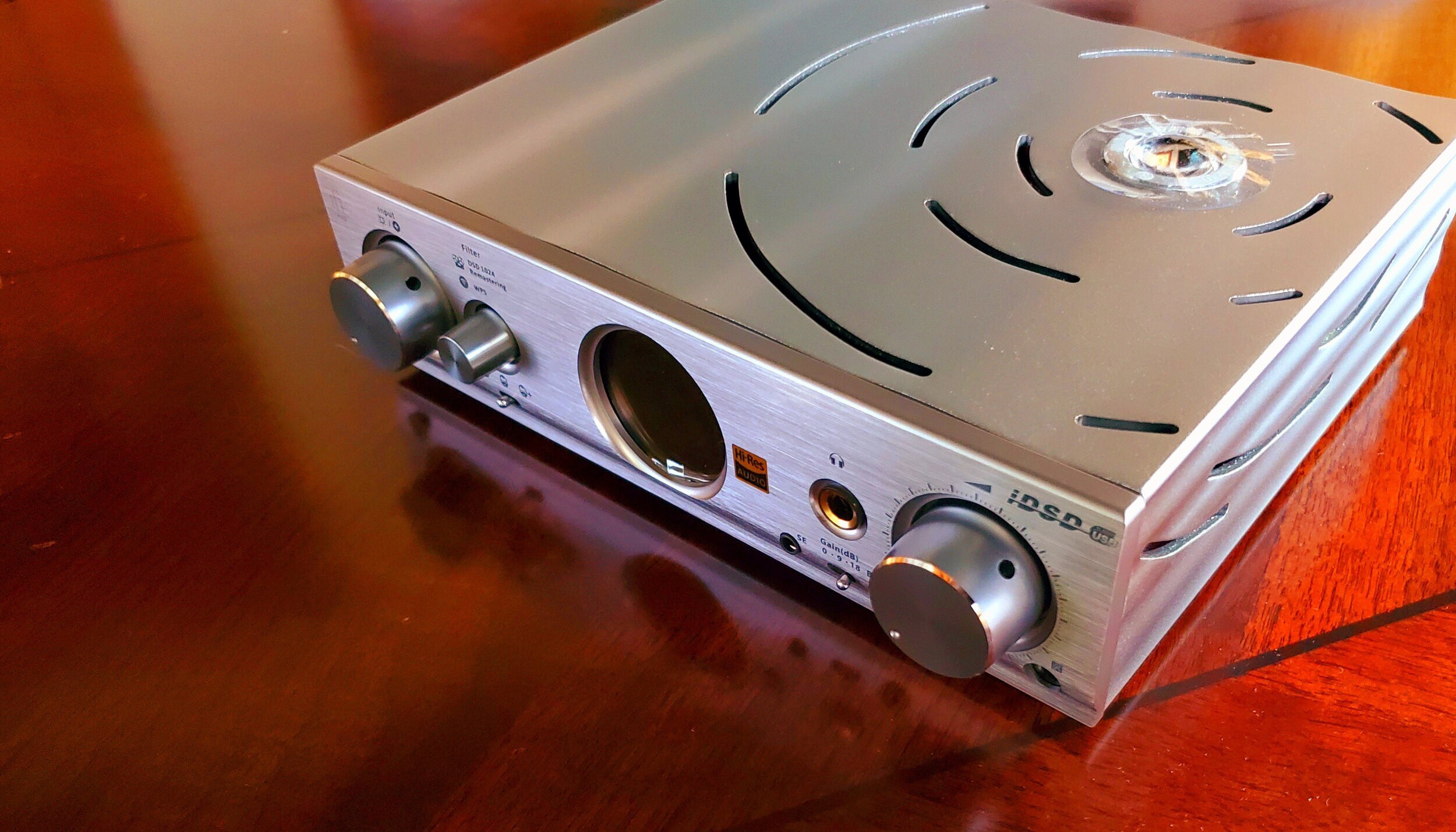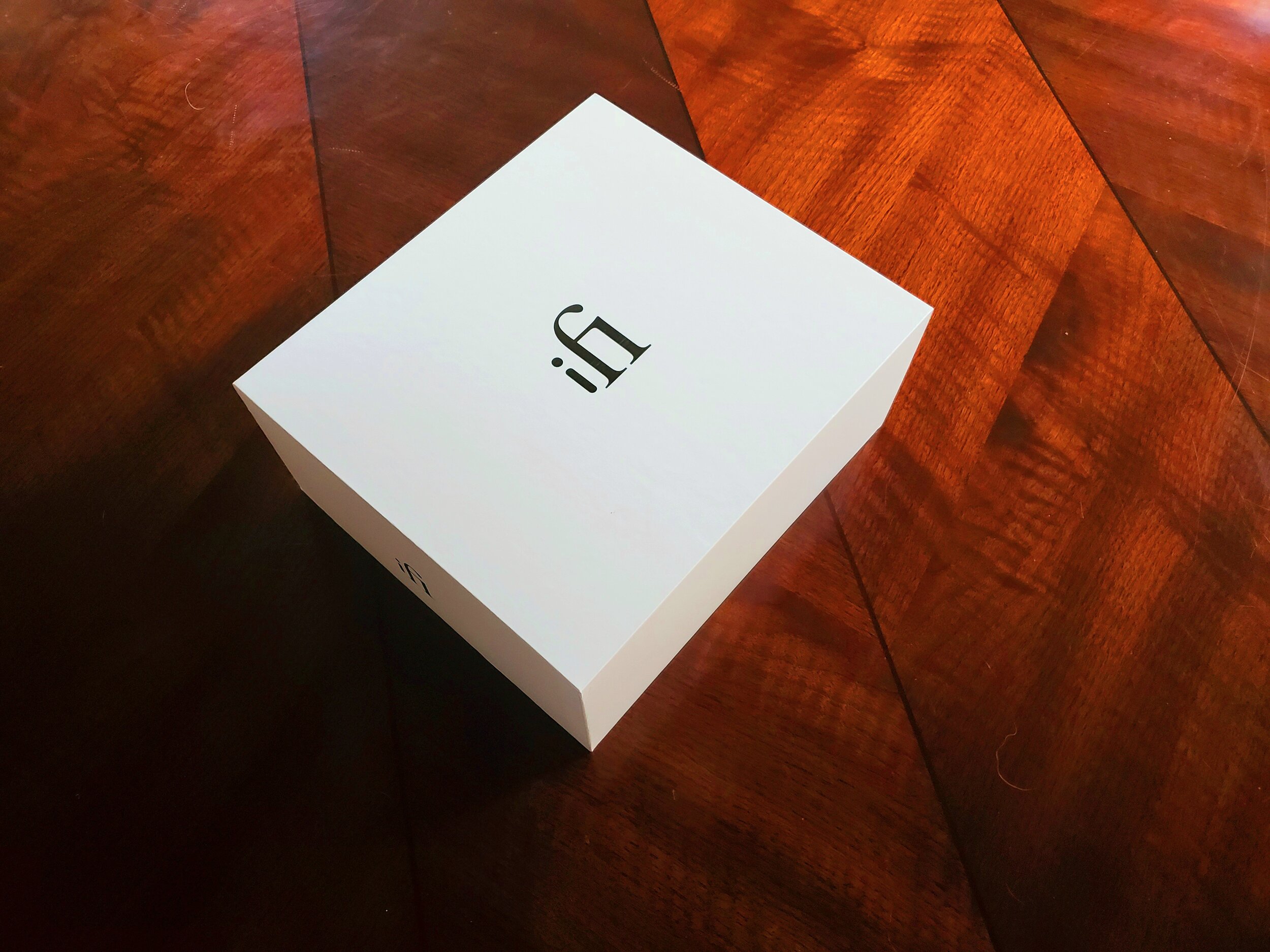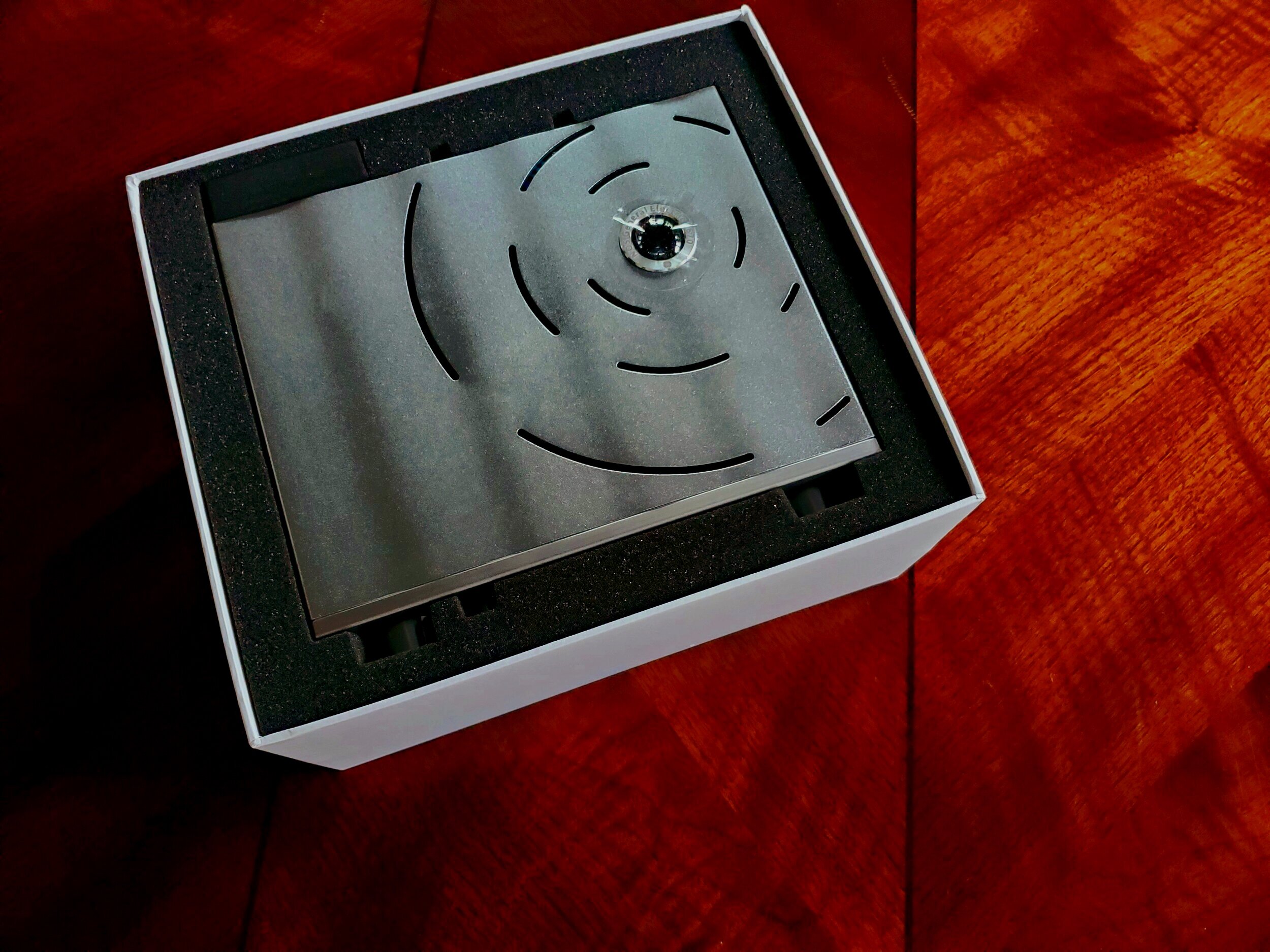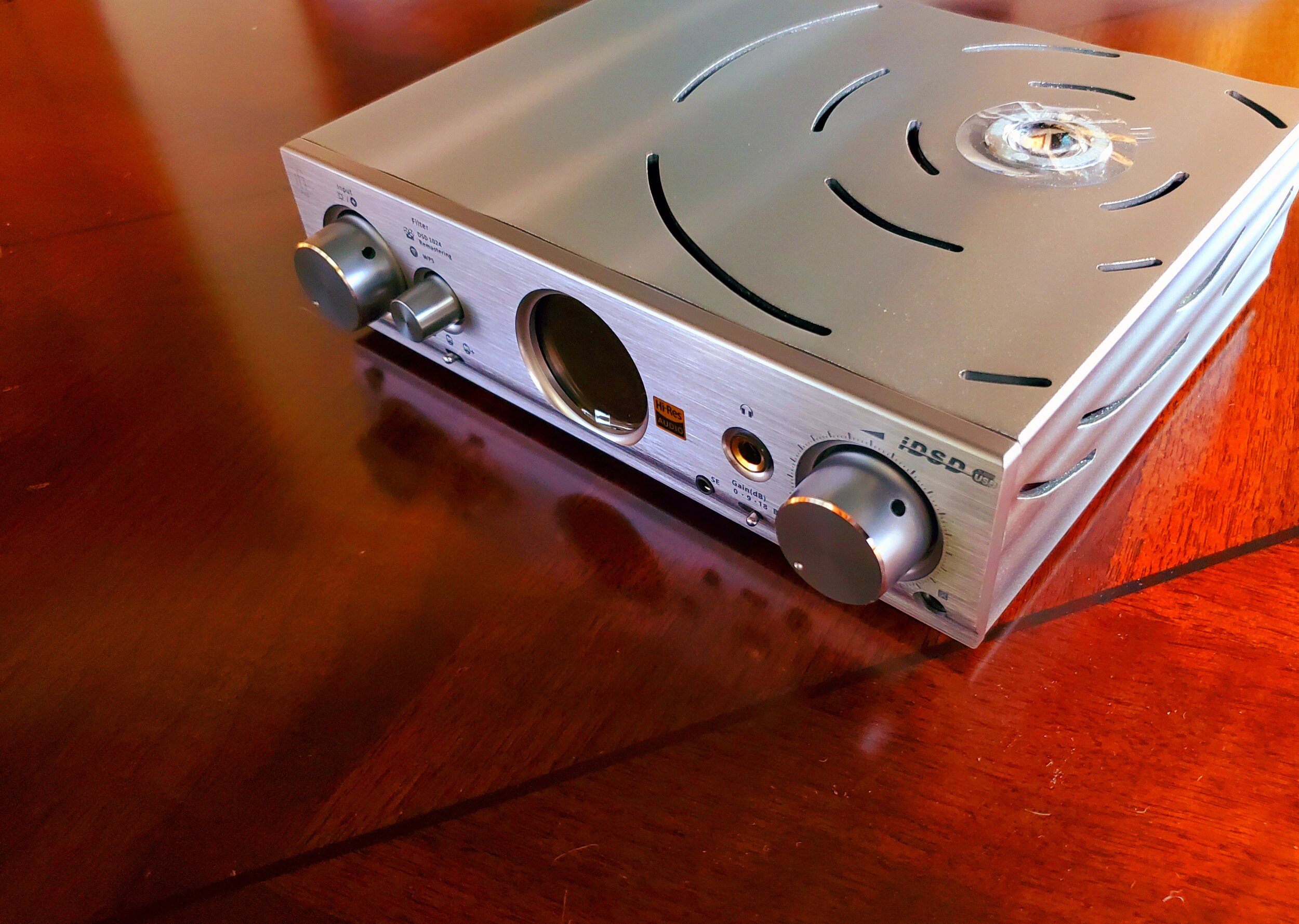IFI PRO IDSD HEADPHONE AMP/DAC/STREAMER REVIEW
A Cornucopia of Wondrous Musicality!
As I had mentioned in the review of the iFi Hip-DAC, iFi Audio since its inception has been very conscious of what we refer to here as the Glorious Age of Accessible Music (GAAM)—access to millions of songs available for listening at home or On-The-Go (OTG). And as a result iFi Audio has developed a number of solutions ranging from the Nano iOne to the Nano iDSD Black to the Hip-DAC to the xDSD to a host of other products for OTG or at-home listening.
This brings us to the review of iFi Audio’s brimming-with-options flagship the Pro iDSD DAC/Headphone Amplifier/Streamer ($2,499). The Pro iDSD is without question an at-home listening component, that will avail to its owner, access to near Yottabytes of music, across every current format—MP3, MP4, PCM, DSD, DXD, MQA, etc.
Additionally, the iFi Audio Pro iDSD provides several filters, for dialing in one’s own personal musical preference, as well as a choice of three “tunings”—Class A solid state (JFET), Tubed (General Electric 5670) or Tubed+ (General Electric 5670 w/reduced negative feedback) from which to chose. And when the ability to upsample any track to either DSD512 or DSD1024, on-the-fly, across all of the above filters/outputs is added, there are basically thirty (30=3x5x2) music shaping “algorithms” from which to chose. But there’s more! The Pro iDSD can be wired directly to an Ethernet connection, where it can “play (music) from a router or NAS (Network Attached Storage)” or it can be utilized for Apple’s Airplay. This is, of course, quite spectacular for those who prefer options!
The time spent with the Pro iDSD was time well spent, in that it offered, as listed above, a plethora of options, wonderful musicality and quite good transparency across all of its options, and it played well with many partners ranging from headphones (dynamic, planar) to In-Ear-Monitors (IEMs) all of which it drove beautifully.
Also, the iFi Pro iDSD allies well to iOS, Android, Mac, and PC alike and to them it will deliver a cornucopia of musical options, that, to date, has no equal. In this respect, the Pro iDSD is a good place to start one’s head-fi adventure or to continue one’s head-fi adventure, as headphones and IEMs alike will, inevitably, mate well.
REFRAIN: Unlike most reviews, this review will be non-sequential, as it will start with how the headphones actually sound and not the process of physically “undressing” them and/or laying out their various parts, specifications, etc. Think of this review then, as a non-linear movie—Memento, Kill Bill, Arrival, Eternal Sunshine of the Spotless Mind, Terminator etc—that, likewise, starts at the end and winds its way to the beginning.
The Sound
The iFi Audio Pro iDSD was paired to our MacBook Pro laptop and to the Rosson Audio RAD-0 (review coming soon) or the Meze Empyrean, as both were approximately within its listed selling price, offered both balanced and single-ended configuration, and were on hand.
Your flavor Sir/Ma’am? As mentioned above, there are numerous options from which to chose when listening to the Pro iDSD and one’s headphones. And as a reviewer it is, generally, our mandate to provide explanation, if not insight to the various musical options. However, time constraints, word limits, and other pressing reviews would combine to put the kibosh—put an end to; dispose of decisively—doing all but three of the “tunings,” which were those that we found most compelling. The first tuning (T1) was the standard, MOSFET output-stage with “BitPerfect” (44.1 – 192kHz, always used for 352.8 – 768kHz) PCM filter, and no upsampling. The second (T2) comprised the “Tube” output stage with the “Gibbs Transient Optimised (GTO)” filter and DSD512 upsampling. And the third tuning (T3) comprised “Tube+” with the GTO filter and DSD1024 upsampling.
Across all of the selected tunings the Pro iDSD was always musical, though increasingly transparent when T2 and T3 options were selected, perhaps, as a result of the GTO filter in combination with increased DSD upsampling (512, 1024).
A favorite song of mine, for decades now, for reviewing equipment is Shirley Horn’s Beautiful Love (You Won’t Forget Me, Verve Reissues). A poor performance is when Shirley’s voice is threadbare, microdynamics are unresolved, sibilant, the guitar is muted, unnatural, and the harmonica is flat, lacking extension, and a natural sense of decay. The Pro iDSD as allied to the Meze Empyrean render Shirley’s voice, her articulation of words and phrases, the microdynamics therein, the guitar, and the harmonica as rich, resplendent, superb.
T1 Tuning (Solid State, BitPerfect, No Upsampling): Beautiful Love via this tuning is beautifully rendered, musical, and natural. Shirley’s microdynamics are clearly resolved, sibilance free, and the harmonica is natural, as it floats in the background, and has a good sense of decay.
T2 Tuning (Tube, GTO, DSD512 Upsampling): In this tuning all of the above apply, but there is more. There is greater refinement in Shirley’s voice, it is more natural, tone and timbre are more saturated, richer across voice, guitar, and harmonica. And there is an analog-like warmth infused across the entirety of the song.
T3 Tuning (Tube+, GTO, DSD1024 Upsampling): Interestingly, all of the above and yet even more, though this is decidedly a music lovers journey! Additional detail is freed but in a manner that is very musical, the soundstage has expanded, and there is a Single-Ended-Triode (SET) richness that is compelling. And Shirley’s voice is even more emotive and nuanced with a good deal more texture.
All three of iFi Audio’s Pro iDSD tunings beautifully rendered this time tested review disc, whereas quite a few high-end two channel stereo systems failed and some miserably so. In this respect, technology has come a long way.
The iFi Audio Pro iDSD’s volumetric cube—its soundstage—is large, though with the Rosson Audio RAD-0 planar headphones it was cavernous—very wide, deep, and of good height. There is a very good level of naturalness, transparency, and refinement even before any of the “tunings” are implemented and the dynamics, separation, and positioning are exceptional.
The Pro iDSD was allied to the Rosson Audio RAD-0 or the Meze Empyrean planar headphones across the various frequencies and for the various tunings as detailed below.
Bass
I’ve selected for review of the bass region Eiji Oue’s rendition of Stravinsky’s Firebird Suite (1919 version): V. Infernal Dance of King Kashchey (Stravinsky, Reference Recordings).
T1: Impact! As the fourth movement begins and it is foundational, it moves air and sets a rather dramatic stage. Or as written in the review of the Rosson Audio RAD-0, the bass “is a gauntlet of subterranean bass notes instigated by a single timpani masquerading as a phalanx of timpani.” The bass of this tuning is taunt, dynamic, with good definition, a generous volumetric cube as soundstage, and quite good separation.
T2: Interestingly, with this tuning the bass is not as impactful, nor as solid, nor as menacing as it was in the T1 tuning. However, tonal and timbral saturation have become richer, more saturated and thus more natural. There is also a greater sense of transparency and texture, which instigates a heightened sense of emotional involvement.
T3: Thunderous impact! Perhaps, increasing the level of remastering to 1024 has not only overcome any diminution of bass as was experienced in T2, but has doubled-down upon it. And there is even greater tonal and timbral accuracy than T2, which conjures an even more corporeal, palpable stage as populated with musicians. Transparency mother to detail and resolution and micro dynamics is ascendent, as the detail from flutes previously muted and distant are now fully represented and alive. Violins rise unattenuated, sweet, and naturally. The emotional engagement is sumptuous and reminiscent of a Single-Ended-Triode (SET) sound.
Midrange
The track selected for review of the midrange is Olafur Arnalds’ Árbakkin (Island Songs, Mercury (Universal France)). I have often gone to this track for its beautiful simplicity and its connection to nature witnessed by birds beyond the building chiming in with the music and its captivating, natural beauty.
A man—poet Einar Georg Einarsson—recites a poem in his native language—Icelandic—in a small, wooden building. It is a language that I do not understand and, nonetheless, Einarsson recital is compelling, poignant, engaging. A piano, Olafur Arnalds at its keyboard, joins him. And soon cello, violins follow to weave musical poetry of their own.
T1: Clear, detailed is the voice of Einar Georg Einarsson with birds punctuating the start of his recital. There is a natural reverberation in this church space and air as Einarsson’s recital is joined by piano and then violins, cello before his recital ends.
T2: Increased timbral and tonal accuracy now bring an analog-like ease and smoothness, that is more natural, more engaging. The piano is fuller and richer, the violins and cello sweet and textured and the reverberation and decay more pronounced, real. And the increased transparency give clearer voice and three-dimensionality to the bird or birds participating from outside.
T3: Transparency is glorious as every movement, every creak of the wooden chairs, seemingly, every sound, that may have been previously obscured, covered beneath a veil, is now set free and in bold relief. Tonality and timbre are richer still which beg greater emotional engagement and a true heartfelt connection to the music. The music is sumptuously rich, in a decidedly SET-like manner. There is a greater volumetric cube, and more space and air, than either T1 and T2 and microdynamics are all nicely improved as well.
Treble+
Vilda Frang’s String Trio, who together play the first two movements of this album, on the track Allegro Molto (Veress: String Trio - Bartók: Piano Quintet, Alpha) weave a fabric of atonal rhythmic staccatos, plucks, drums and knuckle raps into a musical fabric that is richly dissonant, provocative, and beautifully played.
T1: With this tuning the instruments are distinct, clear, resonant, and emerge from a black-quiet background with weight, extension, and air, across a sizable soundstage. There is very good immediacy and transparency across this movement.
T2: Via this tuning Allegro Molto is more natural, more textural, more vivid, with greater reverberation and decay as note hang, however briefly, in the air then circulates about the players. There is greater twang now across the strings and all instruments. The various movements of the musicians is now more corporeal, real. And transparency and immediacy are greater still.
T3: The energy, drive is more vivid and, yet, even more natural, more organic, more textural, with reverberation and decay reaching new levels of verisimilitude. This tuning, it appears, has “lifted all boats,” which now float above the blackest of a dead-quiet background. As a result, clarity, separation, speed, inner detail, immediacy, and microdynamics rise above the other—nested, split-personality tunings of the Pro iDSD. And quite beautifully so, I would say. This is, without doubt, musical nirvana, a glimpse of the “musical grail,” so to speak, for those who consider themselves music lovers first.
The Wrappings and Accessories
The iFi Pro iDSD comes in a printed sleeve that is clean and tastefully done. The inner box embraces print minimalism with simply the iFi logo spot printed in silver, and in large type across its top and sides. It is reminiscent of a high-end department store’s design and branding, and it is quite appealing.
Inside, the top lifted, one finds the Pro iDSD snugly ensconced within its foam housing. Once the Pro iDSD is removed and its top compartment lifted one finds below it three separate compartments. The contents of these compartments:
1 plastic remote with volume controls (only)
1-Power cable
1-15V Power Unit
1-USB-A (male) to USB-B (male) adapter cable
1-Pair of iFi short, RCA interconnects
1-Wifi antennae
1-Toslink adapter
1-Plastic flat-head screwdriver
Design—Look and Feel
The design of the Pro iDSD is straightforward industrial, with a rectangular body fitted with heat vents, that are designed in the manner of expanding, dotted, concentric ‘circles.’ The circles expand from a window which exposes its tubed treasures (2-NOS GE 5670). The circular vents rise and fall over an undulating wave pattern on the Pro iDSD’s top face. Ripples across a pond of windblown water, perhaps? It is a desktop solution for all but the most hardy of OTG/Coffee Shop/Office Head-fiers.
The front and back faces of the Pro iDSD are, literally, chock-full of digital inputs, outputs, and knobs, with a round OLED display center-front that provides the digital lay of the land with regard to digital filter, sampling rate, upsampling rate, and selected input.
All in all, it is a clean, functional outer case design with a dizzying amount of bells, whistles, options, that give the appearance, at least on its back face, that things have been shoved together on too little real estate. This is, of course, from a design perspective. Functionally, this is a veritable candy store for audiophiles, music lovers, and experimentalist, who may well be pleased with all that the Pro iDSD has to offer.
Functionality
Given the immensity of the functional options set that the Pro iDSD as preamp, network streamer, headphone amplifier, and DAC has to offer, perhaps it is best, in the interest of brevity (and word length), to break down its raison d'être—reason for being—directly from its front and back panels.
The Pro iDSD’s front panel, from left to right:
LED: In the upper, left-hand corner is an LED which provides indication for warming up (green), solid state mode (white), tube mode (orange) and protection mode (red).
Power/Standby: In the lower, left-hand corner is a small button, partially flush, that facilitates ON/STANDBY/OF.
Input Selector: To the right of the aforementioned buttons is a larger button responsible for brightness (press), polarity (hold), and input options as listed below:
Wifi/Ethernet/Hard Disk/Micro SDHC
USB (computer)
Coaxial/Optical
XLR
BNC
Digital Filter: To the right of the selector button is this smaller button, which provides digital processing via Bit-Perfect (non-oversampling), PCM Upsampling which upconverts to 705.6/768kHz using four digital filters:
Bit-Perfect+ (no digital filtering applied, SINC rolloff corrected
Gibbs Transient Optimised (minimum filtering, no pre-ringing, minimum post-ringing, 32 taps)
Apodising (modest filtering, no pre-ringing, modest post-ringing, 128 taps)
Transient Aligned (max filtering, max pre-ringing, max post-ringing, 16,384 taps)
The last digital processing choice is DSD Remastering, which converts the incoming signal to either 1) DSD512 or 2) DSD1024. Remastering is engaged by depressing the button—once for DSD512 and a second time for DSD1024.
Output Mode: Below the Digital Filter knob is a toggle switch which allows a user to select between three output modes:
Solid State (Class A, JFET based circuitry)
Tube (Class A, tubed based circuitry featuring two GE5670 tubes)
Tube+ (Class A, tubed based circuitry featuring two GE5670 tubes w/reduced negative feedback)
Given the number of Digital Filters (5–inclusive of Bit-Perfect), the number of DSD Remastering choices (2), and the number of Output Modes (3) there are thirty (30) listening permutations that can be dialed in “On-the-Fly.” This is, well, brilliant!
OLED Display: As mentioned above, the OLED display provides the digital lay-of-the-land with regard to digital filter, sampling rate, upsampling rate, and selected input.
Headphone Inputs: To the right of the OLED display and in a triangular formation can be found three headphone inputs:
6.3mm (top of the triangle)
3.5mm (left base point of the triangle)
4.4mm (right base point of the triangle)
Headphone Gain Selection: At the middle of the base of the Headphone Input triangle is a selector switch, which allows for 1) 0dBs of gain 2) 9dBs of gain or 3) 18dBs of gain.
Analogue Volume Control: Completing the front panel’s wealth of knobs/buttons, switches, and inputs is a volume control knob, that can be manually adjusted or adjusted via the supplied remote control.
The Pro iDSD’s back panel inputs and outputs and others will be ganged together from left to right and will come with an explanation when necessary.
Outputs: The Pro iDSD features both 1) Balanced and 2) Single-Ended outputs for connecting to an amplifier.
Output Selector: To the right of Outputs is an Output Selector knob which can set the output for home or studio use across the following settings:
HiFi Fixed
HiFi Variable
Pro Fixed
Pro Variable
Inputs: The Pro iDSD features numerous inputs which allow for connections between computers, digital transports, USB storage devices, Micro SDHC cards, Network Attached Storage (NAS) devices, and professional consoles. A listing of the inputs includes:
Ethernet
USB-A (external hard disk)
USB-B (computer)
Coaxial/Digital Input (CD transport)
Micro SDHC
AESS/EBU (XLR) (CD transport, Digital Audio Workstation)
BNC (CD transport, clock synchronization)
Wi-Fi antenna
Other: Includes Clock Sync functionality, power connection, and DC Loop-Out connections.
The Specifications
Sample rates: PCM up to 768kHz.
DSD up to 49.152MHz (DSD1024).
DXD and double-speed DXD (2xDXD)
Inputs: USB (for DSD, DXD and sample rates above 192KHz)
AES3 (XLR – single link).
S/PDIF (coaxial/optical combo).
BNC multifunction (S/PDIF in or sync input)
Outputs: Balanced XLR at 4.6V (+15.5dBu – HiFi) or 10V (+22dBu – Pro).
Single-Ended RCA at 2.3V (HiFi) or 5V (Pro).
Headphones 6.3mm & SE 3.5mm Jack at 0.55V/2.1V/5V.
Headphones BAL 2.5mm/4.4mm Jack at 1.13V/4.6V/10V.
Headphones out 1,500mW RMS X 2 @ 64 ohm, 4,000mW max. 2 X @ 16 Ohm
Headphone Output
Impedance: Single-Ended (S-BAL): < 1 ΩBalanced: < 2 Ω
Volume control: Balanced (6-gang) Alps potentiometer, motorised with IR remote control
XLR/RCA outputs can be selected as fixed level or adjusted, 6.3mm headphone jack is always adjusted
Other Functions: Various digital and analogue filters can be selected for DSD and PCM up to 384KHz
PCM Filters: Bitperfect 44.1 – 192kHz, always used for 352.8 – 768kHz.
Bitperfect + 44.1 – 96kHz.
Gibbs Transient Optimised 44.1 – 384kHz.
Apodising 44.1 – 384kHz
Transient Aligned 44.1 – 384kHz
DSD filters: Fixed 3rd order analogue filter @ 80kHz with correction for DSD's -6dB gain
Gain (headphone section): User-selectable: 0dB, 9dB and 18dB
Dynamic range: 119dBA (solid-state, PCM, -60dBFS)
Output power: Pro iDSD 4.4mm socket. (16 Ω, balanced/single-ended): >4200mW
/1>1,575mW.
Pro iDSD 2.5mm socket. (16 Ω, balanced/single-ended): >4000mW
/1>1,500mW
Output voltage: (600Ω, balanced/single-ended): >11.2V / >5.6V
Input voltage (Pro iDSD): DC 9V/6.7A – 18V/3.35A
Input voltage (iPower+): AC 85 – 265V, 50/60Hz
Power consumption: < 22W idle, 50W max.
Dimensions: 213 (l) x 220 (w) x 63 (h) mm
Weight: 1980g (4.37 Ibs)
Conclusion
The iFi Audio Pro iDSD Preamp/Headphone Amp/Streamer/DAC represents the electronic version of the venerable Swiss Army Knife plus! Its digital agnosticism allows it to play well with virtually all comers. And it will either let their digital goods flow through untouched (vanilla) or, if required, it will provide thirty (30) tunings (flavors) from which to chose. To date, I am not aware of its equal in this respect and would say that for many this could be a very good place to start on the variety of options alone or to continue one’s long musical journey!
The next big plus comes in the Pro iDSD’s ability to truly render a cavernous soundstage and an incredibly transparent and musical palette, that dances along the outskirts of solid state musicality to, literally, push-pull tube musicality to the outskirts of Single-Ended-Triode musicality! And this in a desktop, all-in-one package that weighs less than five pounds. Huzzah!
The Cons. Wireless connection was problematic and the Muzo app was problematic as well. It’s probably high time iFi created (or borrowed with permission—licensed) its own control application. However, as I really didn't employ the Pro iDSD in a wireless manner (no thanks to Muzo) I cannot speak to its musical bonafides in this respect. There was also the fact that my OLED screen was only partially active. I’m attributing this to a “loaner model for ‘the reviewer.’” Hmmmmm….
The above said, the iFi Audio Pro iDSD is an incredibly musical, emotionally engaging, wondrously transparent, sound-staging champ with more options than Mad Max at Aunty’s weapons checkout station (Thunderdome, Warner Bros. 1985). Regardless of the IEMs or headphones laying about your “pad” the Pro iDSD should absolutely be on your very short list, as it will play quite well with ALL of them. Highly recommended and the winner of our HIGH NINES AWARD.
MUSIC—Qobuz, TIDAL EXCLUSIVELY
Alexander Tharaud—Tharaud Plays Rachmaninoff
Omar Sosa—Ballads, Calma
Patricia Barber—Verse
Rickie Lee Jones—Pop Pop
Sade—Lovers Live
Sheku Kannah Mason—Inspiration
Tracey Chapman—Where You Live
Olafur Arnalds—Island Songs
Olafur Arnalds—The Chopin Project
Melody Gardot—My One and Only Thrill
Melody Gardot—My Worrisome Heart
Eiji Oue—Rachmaninoff: Symphonic Dances
Hilary Hahn—Tchaikovsky
Mechell Ndegeocello—Bitter
Jordi Savall—Tous les Matins du MondeMaxwell—Maxwell’s Urban Hang Suite
Sarah Jarosh—Undercurrent
Igor Stravinsky—Stravinsky: Le sacre du printemps (The Rite of Spring)
Annie-Sophie Mutter—Mendelssohn, Brahms: Violin Concertos
London Grammar—If You Wait
Stevie Wonder—Innervisions
Miles Davis—Kind of Blue
Jóhann Jóhannsson—Orphée
Alexis Ffrench—Evolution
Dave Holland—Emerald Tears
Gidon Kremer, Daniil Trifonov, Giedre Dirvanauskaite—Preghiera/Rachmaninov Piano Trios
Joan Shelly—Joan Shelly
Magdalena Kožená—French Arias
Andy Bey—American Song
Erykah Badu—Baduism
Kronos Quartet—Kronos Caravan
ANCILLARY EQUIPMENT
Cayin N6ii/A01
Cayin N6ii/E01
iBASSO DX220-AMP1/MK II
iFi Pro iDSD
Meze Empyrean
OBravo EAMT-2C IEMs
Final Sonorous III
FiiO FH5
AudioQuest Cobalt
AudioQuest Red
AudioQuest Dragon Tail
Samsung S10
Apple X iPhone





